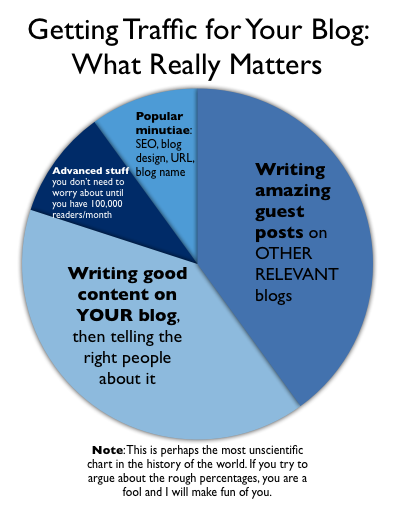Sent to you by Sparkie via Google Reader:
Things you can do from here:
- Subscribe to DX World of Ham Radio using Google Reader
- Get started using Google Reader to easily keep up with all your favorite sites
Computers, Technology, Amateur Radio and common sense.
Is this a great country or what...
OK...Let's get started.


MOTO Labs will be unveiling their "DIY Android Home Energy Monitor" today at Maker Faire. MOTO's Daniell Hebert will be giving a talk, "Android Beyond the Phone," at 3:30pm Sunday, on the main stage. The MOTO Labs booth is 113 in Expo Hall.
So what is the AHEM?
The MOTO DIY Android Home Energy Monitor (AHEM) utilizes an average wireless network. Wireless webcams take pictures of the ever-changing dials on the user's utility meters. A BeagleBoard running Android and the MOTO AHEM custom applications push the pictures up to a Flickr photo set.MOTO AHEM application prompts and transcribes numbers into your Flickr image tag. Saving the image spurs the MOTO Labs' Google Gadget to automatically chart meter activity on the user's Google home page.
More information can be found here on their website.
Did you know that DotNetSlackers also publishes .net articles written by top known .net Authors? We already have over 80 articles in several categories including Silverlight. Take a look: here.

(Rudy Rucker is a guestblogger. His latest novel, Hylozoic, describes a postsingular world in which everything is alive.)
Looking back over the advance of physics over the last two hundred years, it's staggering to realize how much our world view has changed. As a science fiction writer, I'm always trying to imagine how much more things might change in the coming two centuries. The really hard thing to anticipate is the completely game-changing advances that occur every so often.
My sense is that, for one thing, we won't be using chip-based computers in two hundred years---any more than we use mechanical calculators now. That's why, in my recent novels Postsingular and Hylozoic, I've been speculating about a world in which our computations escape from our machines and filter into our ordinary matter.

Nick Herbert is one of my favorite offbeat physicists. One of his papers in particular is something I've thought about a lot over the years: "Holistic Physics, or, An Introduction to Quantum Tantra." Here Nick argues that our conscious minds display some of the same features as quantum mechanics. When we're not thinking about anything in particular, our thoughts evolve in a continuous, multi-universe kind of way---but when we focus on something, we carry out something like the quantum collapse that characterizes the process of measurement.

[Brain models from the Collection of Historical Scientific Instruments at Harvard University.]
As I've been saying, I think it's at least in principle possible that the quantum computations in ordinary matter might be capable of carrying out these same kinds of processes---which we normally associate with living, conscious minds. And Nick's paper helps you to think about this idea.
David Deutsch wrote a deep and technical paper about the topic of computation in arbitrary pieces of matter, called "Quantum theory, the Church-Turing principle and the universal quantum computer."
The basic idea is that quantum mechanical systems can act as universal computers, and it's generally believed that any universal computer can emulate a human mind (given the right program, and, aye, there's the rub).
One of our big problems is that we still have such an imperfect notion of how to build a software system that's like a human mind. The best idea along these lines that I've seen in the last few years is in the book On Intelligence, by Jeff Hawkins and Sandra Blakeslee.

Two more rich sources for futuristic ideas.
(1) The arXiv.org site---for instance look at their New Papers on Cosmology and Extragalactic Physics page. It blows my mind that you can so easily access all these wild new papers, easily readable in PDF form. Even if, for the average person, a lot of the writing is incomprehensible gibberish (like the backwards neon sign shown above), you can skate through and pick up some great concepts and buzzwords.
(2) The physicist John Baez's pages. Baez is a deep thinker and a gifted popularizer, adept at imparting the true strangeness of this world.
It's liberating to realize that, as always, we're very much on the edge of knowing what's really going on.
If we find a new charter, we plan to operate from Ogliuga Island June 14-19th. IOTA NEW-ONE NA-233
If no charter is found, we will only have 24-36 hours time frame to operate from Gareloi Island June 12-14th NEW ONE NA-233

 The economy hasn't been doing too well and there hasn't been a lot of good news to share lately. Not only are businesses going bust each day, but consumers are feeling the pinch too, and there doesn't seem to be an end in sight.
The economy hasn't been doing too well and there hasn't been a lot of good news to share lately. Not only are businesses going bust each day, but consumers are feeling the pinch too, and there doesn't seem to be an end in sight.
Tough times like these call for tough measures and while we at MakeUseOf cannot fund a rescue package to revive the economy (yet!), we do try and help you guys in whatever little way that we can.
No, we aren't going to suggest some tough measures to tide over the bad times. Instead, we're going to make it easier for you to stretch the reach of your dollar with our selection of 5 online sites which will not only allow you shop from the convenience of your couch, but also help you find good deals online and the most bang for your buck.

A recession is not the best time to upgrade your computer and the good folks here at MakeUseOf have been showing you ways to prolong the life of your computer all this time. However, if you're really in need of new hardware, make sure you visit CheapStingyBargains to get a good deal.
CheapStingyBargains catalogues and lists discount coupons and special deals from hundreds of computer manufacturers and dealers. The site offers the best deals and coupons for everything from computers to electronics and apparel to home goods.

Don't you hate it when you checkout an item from an online store only to find out that the shipping costs are more than the total price of your goods !
This is why I always make sure I give Freeshipping does one thing and does it well. It keeps a track of any free shipping offers going on at the 1500 stores on its list.
The next time you're shopping online, be sure to check out all the free shipping deals that Freeshipping.org tracks.

Dealcatcher is another coupon site that you should visit before making any online purchase. They have a long list of ready to use coupons and track more than 2000 online stores.
The kind of products that you can search for on DealCatcher varies from the usual computer and electronic stuff to apparels, auto accessories, shoes, flowers, cell phones, DVDs and so on. In short, if you've got a product in mind, they probably have an online store on their list that can give you a discount for it.

The greatest thing about FatWallet.com are the thousands of users who try out the coupons and let everyone else know which coupons are valid and where. The FatWallet community hangs out in the Forum where they share even more coupons and deals which were found elsewhere and generally help each other make the most of their money.
If you're the cashback kind, there's good news for you too. FatWallet is one of the few coupon sites that actually gives a cashback to users for using coupons found on their site.

If you're the kind who is always on the lookout for a bargain, I'm sure you know how cumbersome it is to go through newspaper coupons, clip and file them. Coupons.com aims to simplify that for you.
On this site, you'll find electronic equivalent of newspaper coupons that you can print and take to your nearest grocery store for an instant discount.
Are there any other websites that you visit to get the best deals? Let us know in the comments.
New on MakeUseOf ? Get cheat sheets, cool PDF guides and more @ www.makeuseof.com/makeuseof-downloads/
More about: coupons, deals, online, save money, save money online, shoppingA couple of weeks ago, I worked N4QR on 40m CW. I could tell by the tone of his signal that he was operating a homebrew transmitter. There wasn't any 60 Hz on his signal, and it didn't chirp exactly, but I could tell it wasn't the pure tone you get out of today's radios.
I asked him about his rig, and he told me that it was a one-tube transmitter made with a 6L6. I forgot to ask him where he got the schematic, but a quick Internet search turned up the following:

The 6L6 is a pentode that, according to Wikipedia, was introduced by the Radio Corporation of America (RCA) in July 1936. Apparently, it was used quite a bit in public address systems.
After the tube became successful, tube manufacturers introduced a number of variations, including the venerable 807. The original 6L6 was capable of delivering 19 W; the latest variation, the 6L6GC is rated for 30 W. The 6L6GC is still used in guitar amps, and is still manufactured in Russia, China, and by Groove Tubes in the U.S. They sell a number of different 6L6 variants; the cheapest is $16, the most expensive $180!!
Tube #2
One of the reasons I was interested in the 6L6 is because about a year ago I came across a schematic for a transmitter using 6A6 dual triode. I had just come into possession of a couple hundred tubes, and while I didn't have a 6A6 (at least I haven't found one yet), I do have a couple of 6J6 dual triodes. They're not quite as high power as the 6A6, but I'm still thinking about building a little transmitter with one.
As you might expect, there's a bunch of information on the Internet about this tube:
One interesting fact about the 6J6 is that IBM used it in the 604 computer. Unfortunately, they found it to be not as reliable as they wanted it to be, but at first none of the tube manufacturers were interested in making a more robust version. This led IBM to set up a tube-making laboratory where they could experiment with designs. They developed a more reliable version of the 6J6 and finally convinced RCA to manufacture the tube. According to the author of the history of the 604, part of the concern is that IBM would decide to get into the tube business.
So, the next time you hear a signal that doesn't sound so perfect, remember that there just might be a story behind it. Ask the op about his transmitter, and listen to what he or she has to say.


Using little more than some PCBs from Sparkfun, two micro servos, some right angle headers and screws left over from a junked Gameboy, Jose Torres from RampageRobotics built this pan-tilt robot camera rig (with the help of a Dremel and a soldering iron). The CMOS camera module is from Electronics123.com. Clever use of the bent header pins to create a right-angle mount for the tilt-servo PCB.
Build a Pan-Tilt Camera Mount in Less Than an Hour

[Photo from Bouyant Safety Paddle]
Joe caught the kayak bug, but didn't want to pay to have one shipped to his home in Hawaii, so he made one.
In the summer of 2005, I bought a dealer demo Perception Sonoma 13.5 and a used Honda Element. I bought the kayak thru Ebay from Adventure Sports, and the Element thru Craigslist. After 18,000 miles and paddles in Arizona, Ontario, Saskatchewan and British Columbia it was time to go home. Freight for the kayak back to Hawaii was more than $300 with packing. I decided to leave the kayak on Vancouver Island and buy or build one on Maui.

His build documentation shows the process he used to make is own kayak on the picnic table in the back yard.
Working outside, ventilation was never a problem. Wind, dust, leaves, insects, birds, chameleons, noise restrictions, sunlight, proximity to living quarters all impacted the build. Wind broke the EPS foam before I got started. Dust and leaves fell on the wet epoxy. A big, black bee burrowed into the EPS. Birds were always chirping and chameleons entertained me from the fence. I used hand tools whenever I could to prevent noise fines from the condo association. Sometimes I had to slather on the SPF and wipe sweat out of my eyes. Mrs. was constantly after me about EPS balls and glass threads on her fancy Indich carpet.

You can check out the rest of the story. Some of the build process would have gone better with a hot wire, and the choice of materials doesn't look like they are the way he would do it again. He did, however make a kayak that met his needs for practicing rolls. Have you made a kayak or other boat? Tell us the story!
[via DIY Happy]
How To Install VMware Server 2 On Ubuntu 9.04
This tutorial provides step-by-step instructions on how to install VMware Server 2 on an Ubuntu 9.04 desktop system. With VMware Server you can create and run guest operating systems ("virtual machines") such as Linux, Windows, FreeBSD, etc. under a host operating system. This has the benefit that you can run multiple operating systems on the same hardware which saves a lot of money, and you can move virtual machines from one VMware Server to the next one (or to a system that has the VMware Player which is also free).
When I started blogging in 2004, I took a good look around at other blogs, calmly chewed a cookie in my dorm room, and then vomited. There were only about 12 big personal-finance blogs back then, and yet even in 2004, I noticed the trend of new bloggers complaining about why they couldn't get covered by the Big Blogs.

Today, I'm going to share a strategy I've used to get regularly featured in The Wall Street Journal and extremely high-traffic blogs like Lifehacker.
You can skip right to the detailed writeup (includes examples & screenshots), but I hope the story below is useful.
This advice can be useful for getting thousands of new readers to your blog, customers to your new startup, or to get your dream freelance job. And you can start using it tomorrow morning.
So, back to the question: Why do some bloggers get the lion's share of attention, while others toil endlessly to write posts that virtually nobody will ever read?
On a recent forum where both new and experienced bloggers share tips for getting traffic, SEO, etc, most of the discussions were debating minutiae about meaningless changes they could make to their blog to get more readers. "What SEO plugin should I use?" one asked. "Does anyone think I should change my blog's name???" another wondered. After 20 minutes of reading, I had to close the window because I was getting so frustrated.
Look, here's a simple chart of what matters for getting traffic for your site.

Besides writing really good content, the easiest way to get traffic to your blog is to write something interesting for another blogger who has more traffic than you.
It's funny — when you point this out to many new bloggers by saying, "Hey, why don't you write up something really good and send it to a bigger blogger as a guest post?" — many of them quickly make up a bunch of excuses. "Well, uh…I am really busy this weekend" or "I'm in the middle of this really interesting post on how HSBC interest rates changed!" Yes, okay.
But it's not just as simple as deciding to write a guest post. When it comes to high-traffic bloggers, there are very specific ways to approach them so they'll accept your pitch.
Before we get to the tactics…
Like I said, this works for bloggers and many other areas of business:
As an example, here were the results of Nora Dunn's travel post earlier this week, which drove nearly 100,000 pageviews in 72 hours. I've already invited her to have a regular guest spot on I Will Teach You To Be Rich.

I've written up a detailed post with the tactics for writing successful guest posts for high-traffic bloggers. This post and the writeup took me over 9 hours to write, which gives you a sense of how much time these take. But when you do it, you can get hundreds of thousands of new readers and many thousands of new customers for your business.
.NET Languages C# and Visual Basic
Architecture, Design Patterns, and Testing
ASP.NET and ASP.NET MVC
Books
Cloud Computing
Desktop and Server Technology
Web Design, Layout, and Graphic Design
JavaScript and JavaScript Libraries
Podcasts and Videos
Social Networking
Visual Studio and Other IDEs
Other Resources
Call For Speakers (Sorted by Date)
Upcoming Technology Events (Sorted by State) Want something listed? Post your comments. Also, whats the best way for me to list these events? By date order or by state, then city, then date?
Did you know that DotNetSlackers also publishes .net articles written by top known .net Authors? We already have over 80 articles in several categories including Silverlight. Take a look: here.
